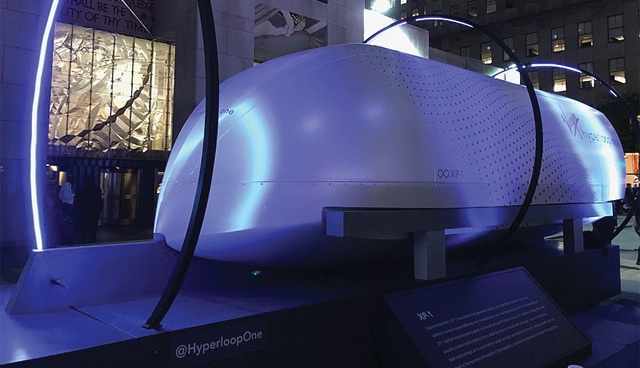Infratech and its possibilities

Infratech is the deployment or integration of digital technologies within physical infrastructure in an effort to create agile, data-driven infrastructure. eolas examines the trends and technologies emerging in this sphere.
As is quite often the case in areas such as emerging technologies, China and India have been to the fore in terms of innovation. In 2020, India was due to begin construction on the world’s first publicly used hyperloop project, connecting the cities of Mumbai and Pune in the state of Maharashtra, which plans to cut travel time between the two cities from four hours to 28 minutes.
Hyperloop is one of the more high-profile and advanced examples of Infratech, which uses reduced-pressure tubes to allow the pressurised vehicles within to travel at speeds of up to 1,2000km per hour. However, despite receiving approval in 2019, Covid-19 has delayed the project, which now appears to be in danger of being scrapped altogether.
In China, the scaling up of infratech is commonplace, with the country having cornered various related markets more likely to affect Ireland such as solar technology and 5G telecommunications. They have also made moves in the AI and robotics areas. Holding influence over these markets can have wide-reaching effects on other, smaller aspects on the worldwide rollout of infratech.
For instance, the prevalence of 5G telecommunications is a key enabler for the rollout of autonomous vehicles; the prevalence of those vehicles will cause the eventual upgrading of traffic infrastructure such as traffic lights with smart technology, which will use the 5G network to inform the autonomous vehicles of the most efficient routes to take in real time.
Ireland could be set to benefit largely from a boom in the use of infratech, not simply through the use of smart vehicles and road infrastructure to solve the country’s longstanding overreliance on personal cars, but also through the proliferation of data centres now sprouting up throughout the country.
The data used for innovations in infratech and further afield will now be processed and stored in Ireland, along with notable IT infrastructure itself, but on top of that, the severe pressure that the data centres put on Ireland’s energy supply also means that the companies building these centres will also be partly responsible for technological advances in Ireland’s striving towards sustainability goals.
For example, Amazon has signed a PPA for Ireland’s first fully private wind farm, although its 91.2MW capacity will be small in the national context of energy demand in a country with a growing population and a large amount of data centres. Hyperscale companies such as Microsoft and Google dominate the Irish data centre landscape with 72 per cent of market share; Microsoft has a target of 60 per cent renewable energy to power its centres.
With the prevalence of tech giants calling Dublin their European home, there is no doubt that the expertise and hardware will be here, how the country uses that to strengthen our health, education, travel and energy infrastructure remains to be seen.





